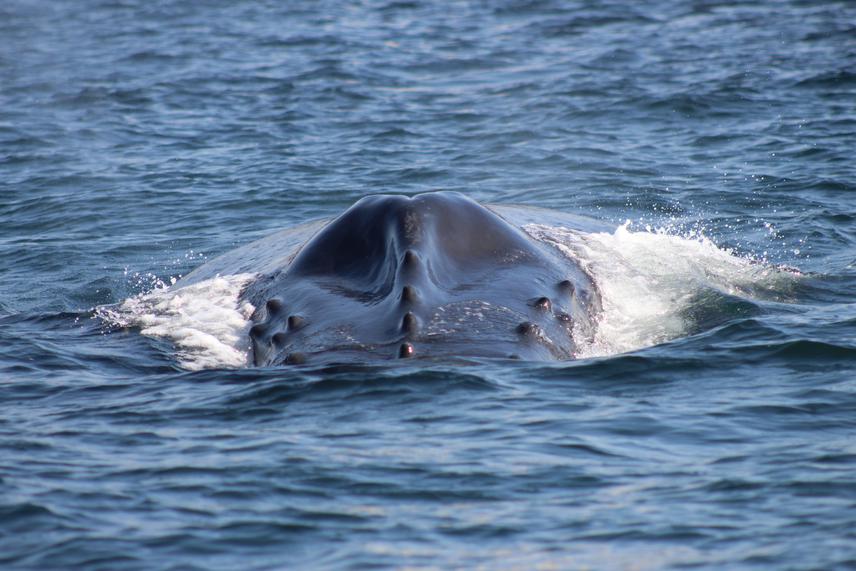Ana María García Cegarra
Other projects
16 Feb 2015
From Whales to Humans: An Integrated Evaluation of the Conservation Role of Whale Watching Industry in the Northern Coast of Peru
17 Jan 2024
Are Whale-Watching Tourism and Entanglement in Fishing Nets Stressing Humpback Whales in their Breeding Area of Peru?
Whale-watching is a growing activity in Peru, generating and diversifying economic benefits to coastal communities. However, whale-watching is unregulated in Peru, and in a recent Rufford-funded study I showed how the activity negatively affects the behaviour of mother-calf groups of humpback whales. Hence, the promotion of best-practices among tour operators and fishermen providing whale-watching services is crucial for the wellbeing of humpback whales, especially more vulnerable groups such as mother-calf pairs. This study aims to understand whether whale-watching affects group cohesion, nursing behaviour and energetic budget of humpback whales mother-calf groups, and through this, to promote sustainable whale-watching practices among local stakeholders.

Adult humpback whale breaking the surface. © Ana García.
Worldwide, whale-watching is an increasingly important tourism activity that provides economic benefits to local communities and brings conservation benefits to marine ecosystem as a tool rising conservation awareness. However, when not performed under regulated conduct code, whale-watching have negative effects on whale behaviour.
In Peru whale-watching is a non-regulated activity focusing on the observation of humpback whales on their breeding ground in the north of the country during austral winter. The activity has experienced an intense growth since 2009, with more than 8500 tourists travelling just in 2018 for whale-watching and more than 15 whale-watching companies operating.
Results from my previous Rufford-funded study showed that whale-watching negatively affects the behaviour of humpback whales in Peru, especially mother-calf pairs. Nursing is crucial for the survival of calves and long-term welfare of the Stock G humpback whale population. Calves have to gain suitable body condition and weight to perform their long migration to high latitude feeding grounds. If breeding humpback whales in Peru fast during the entire season and whale-watching disturbs nursing in mother-calf pairs, it will be reflected in their energy budget and could have detrimental consequences for the long-term welfare of the population.
This project has two main contributions a scientific and a conservation one. Scientifically, this project aims to understand whether humpback whales fast during breeding season, and if whale-watching disrupts nursing and group cohesion between mother-calf pairs.
By the use of an unmanned aerial vehicle operated from land-based surveys I will assess whether whale-watching disturb nursing behaviour. I will register group cohesion, surface and diving time of coastal mother-calf pairs with and without the presence of whale-watching boats.
To assess whether humpback whales fast during breeding season I will take skin biopsy samples of humpback whales adult individuals at the beginning and at the end of the breeding season for stable isotope analysis (SIA). With SIA I will be able to understand where humpback whales were feeding three months before the breeding season and whether they isotopic signal variated along the breeding season while fasting.
The conservation focus is to promote whale-watching best practices among local tour operators in northern Peru. By workshops and oral talks, we will disseminate best whale-watching practices among 40 local fishermen and 10 tour operators in three different villages of northern Peru. In addition, this study will contribute (by providing more evidence) to the drafting of Peruvian whale-watching legislation.